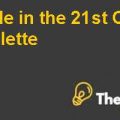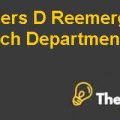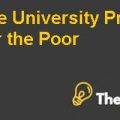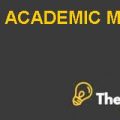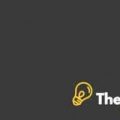Question No: 1 (a)
The time of cooking one order is 3 minutes and for each additional order in the batch adds 0.5 minutes. However, the process capacity could be calculated by 8 / (3 + (0.5*8)), which amounts to 1.14 units per minute.
Question No: 1 (b)
To calculate the batch size, suppose variable x is the batch size, in the formula 3+0.5x/x=0.8. Then after implementing this formula we get, the batch size amounting to 10 units per batch.
Question No: 2 (a)
The calculation ofthe capacity of stamping machine as well as assembly departmentis illustrated in the Excel exhibit. In which, bottleneck is that activity in a process with the least capacity or longest processing time. Therefore, it can be evaluated, as the capacity of stamping machine amounts to 25.81 units per hour, whereas, the capacity of assembly department is 24 units per hour. Hence, it can be determined that the Assembly department is the bottleneck, as it accounts for less capacity, as compared to stamping machine.
Question No: 2 (b)
In the excel exhibit, the capacity calculated can also be referred as process capacity, in which assembly department capacity amounts to 24 units per hour and the stamping process capacity amounts to 25.81 units per hour, while considering both part A & B.
Question No: 2 (c)
At the stamping machine, it can be determined that increasing the batch size at a particular step by a particular size would increase the process capacity at that step, without decreasing the current flow rate. However, if the batch size of part A decreases to 110, then it would decrease the Stamping machines capacity to 24.09 per unit instead of 25.81. Therefore, it was evaluated for the excel exhibit that as the batch size of Part A decreases, it would further decrease its capacity.
Question No: 3 (a)
The Economic ordering quantity method was used as represented by the formula Ö2(cost of ordering) (Annual demand)/Cost of holding per unit, which was implemented in the excel exhibit to reach the economic order quantity amounting to 6,324.56. Therefore, it can be determined that, Joe should order above mentioned amount, which could provide economic value to the organization.
Inventory Management Harvard Case Solution & Analysis
Question No: 3 (b)
If Joe decides to order 3800 gallon each time he places an order to his suppliers, then he would ion average order around 63.16 orders. Calculated by the formula represented as annual demand/order quantity.
Question No: 3 (c)
If Joe decides to order 15000 gallon each time he ordered to avail the discount of 4% on per gallon price, then the average number of orders would amount to 16 in the year, amounting to $560 in ordering costs. Whereas, the total cost of material would amount to 276,480, after availing the discount of 4%. Hence, the total cost incurred in the year would amount to 377,840, after including the holding cost per unit.
Question No: 4 (a)
The economic ordering quantity amounts to 346.61 calculated using the formula represented as,Ö2(cost of ordering) (Annual demand)/Cost of holding per unit. Furthermore, in the excel exhibit, the total annual ordering cost amounts to $120,249.42 and the total annual holding cost amounts to $24,000. The total annual cost amounts to $144,249.42, as calculated by addition the total cost of ordering and holding.......................
This is just a sample partical work. Please place the order on the website to get your own originally done case solution.

